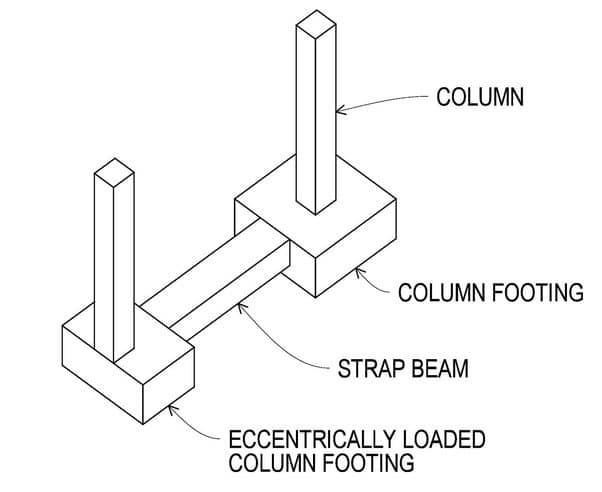A strip foundation is a type of foundation that connects the eccentrically loaded foundation to the inner column foundation. Additionally, these types of foundations may be called combined foundations because they connect two or more columns.
Strip foundations are most commonly used in construction because we need to construct the building up to the boundary wall. We cannot establish our foundations on someone else's property. Therefore, the pillar must be placed on the edge of the foundation. This creates a load eccentricity.
To solve this problem, a foundation is constructed with strip footings, and the bending moment and shear forces caused by the eccentric load are transmitted to the inner column through the strip beam. There are specific procedures to follow when constructing strip foundations, which we will discuss in the final part of this article.
Additionally, it should be noted that these types of foundations are considered a type of Spreading .
Types of belt foundations
The function of these types of foundations is to transmit the bending and shear forces caused by the eccentricity of the load. There are several methods for transferring bending and shear forces to the internal column or supporting structure.
Depending on the type, we can categorize strip foundation types as follows.
- Strap beam connected to the foundation supported on the internal support
- Strap beam, connected to the foundation, which rests on the interior wall
- Belt beam connected to the foundation that supports the counterweight.
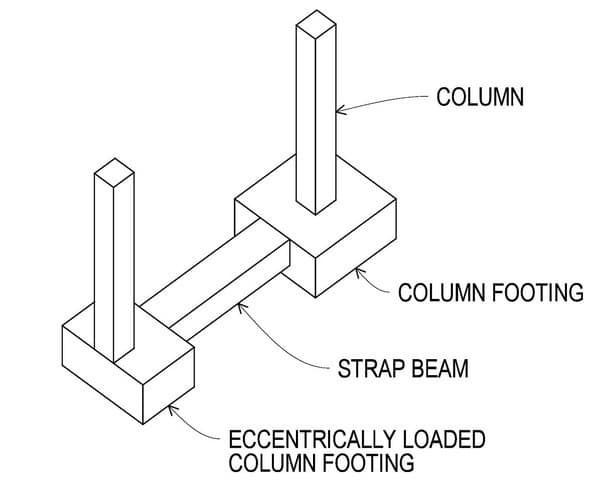
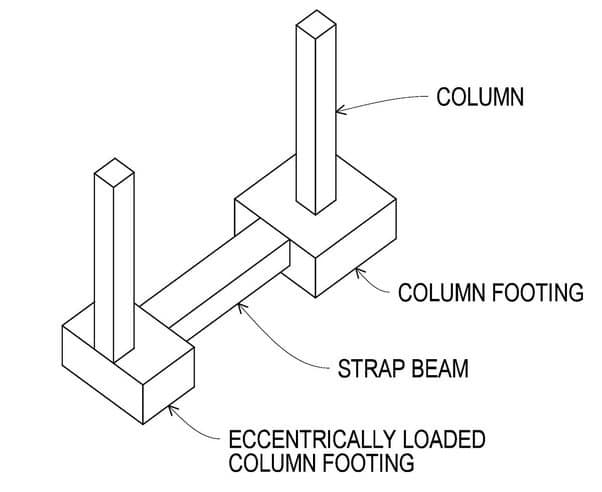
Belt conveyor connected to the inner column
This is the most commonly used foundation type with strip footings designed to handle load eccentricity. Compared with other types of foundation, it is more practical.
Connecting the brace beam to the internal support is a more economical solution compared to supporting structures such as solid concrete blocks.
Normally the connection of the strap beam is made with the foundation and the inner column foundation. As we wanted to reduce the stress concentration in the eccentrically loaded column, continuing the chord beam through the foundation is the best course of action, as indicated on the left side of the figure above.
Support beam for support on the interior wall
There may not always be nearby or perpendicular internal supports to support the belt conveyor. Therefore, we need to support the beam with the available element. These types of belt foundations are also not widely used in construction.
For reinforced concrete walls, we support the strap beam on the wall.
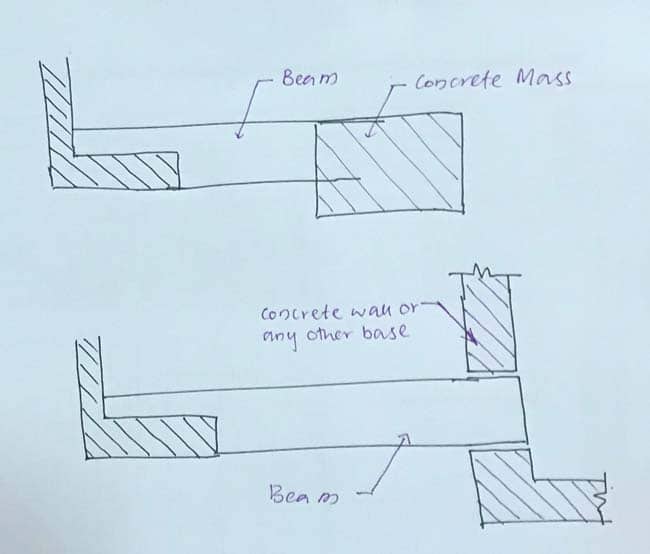
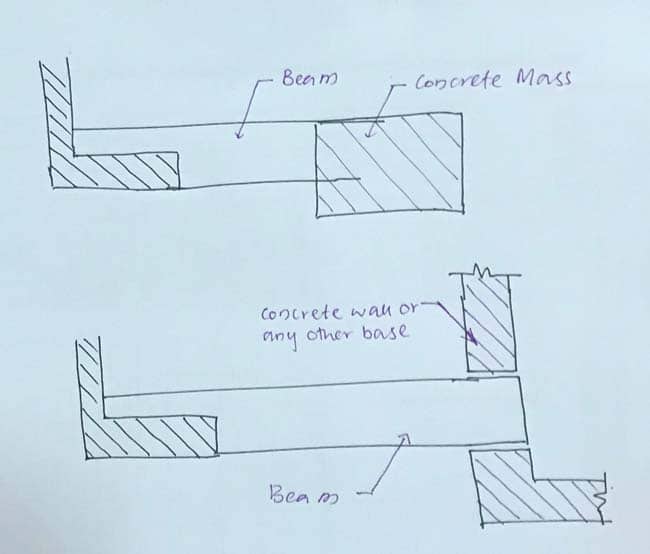
Depending on the thickness and arrangement of the wall reinforcement, the connection details of the beam and the wall are determined. If a thin wall is not very rigid, we allow rotation at the joint as indicated in the figure above.
If the supporting wall has a thickness of 225-300 mm, we can connect the belt beam to the wall monolithically. Joint construction must be carried out very carefully and care must be taken so that the wall does not crack. In the case of very high loads, reinforcement must be carried out very carefully.
If the wall and beams are not made in one piece, attention must also be paid to waterproofing requirements. Particularly in the case of water storage structures, we could have manufactured the wall and beams from a single mold.
Counterweight mounted belt support
If there is no supporting element for the strap beam, we can build it in solid concrete, the weight of which is greater than the upward reaction caused by the foundation.
The designer must pay special attention to all possible load cases and the load case that produces the critical response must be considered in the design.
Of the three types of strap foundations discussed in this article, the strap support that connects the interior column is the most common type.
Why do we need strappy feet?
- This is a type of foundation known as a combined substructure and shallow foundation designed to handle the eccentricity of the load.
- If a single foundation does not have an attached strap beam that is loaded at the edge of the foundation, the pressure distribution under the foundation will be uneven. A triangular pressure distribution is created and a significant increase in pressure can be observed at the edge.
- An increase in this pressure can cause bearing failure if it exceeds the allowable load capacity.
- Even if the permissible supporting pressure is not exceeded, the problem of foundation settlement still exists. Due to the concentration of stresses in the foundation/soil, greater settlement of the foundation may occur because not the entire area of the foundation strip is effective.
- With this in mind, we design strip foundations to solve the above problems.
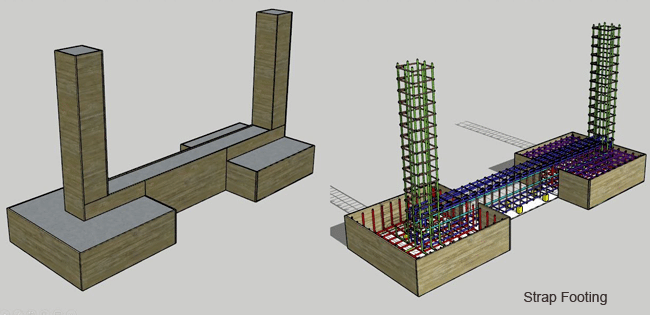
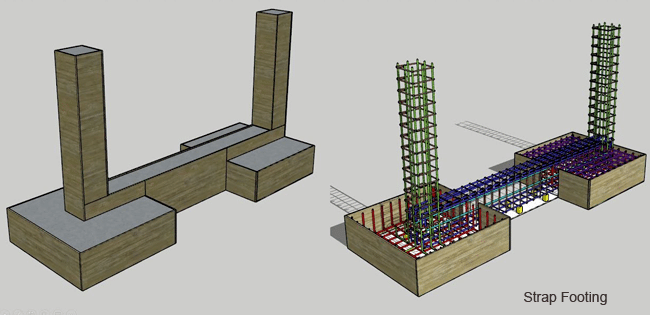
S Trap Foundation Design
When planning strip foundations, the following procedure must be observed.
The procedure explained below applies to edge foundations that are attached to an interior column foundation by a brace beam.
- The selected thickness of the foundation. This can be selected based on the designer's experience.
- Calculate the total area required for both foundations
A Required =F 1 +F 2 /Q all where F 1 – Load from column 1, F 2 – Load from column 2, q all – permitted bearing capacity of the soil
- Calculate the load center or the point at which the net force acts for both foundations
- Calculating the dimensions of the foundations is a challenge. Assume the width of the shoes and calculate the other dimensions of the two shoes.
- Calculate the maximum pressure under the foundation.
- Calculate existing and shared forces taking into account balance.
Related articles
- Combined underground
- Surface foundation
- Shallow foundations
- pillar foundation
- Foundations
- Deep foundations
- Foundation failure
- support
- Eccentrically loaded foundations
- Shallow foundation failure
- Pile slab foundations
- mat base
- Foundation pile
- Driven pile foundations
- Pile foundations
- Buoyancy pressure in foundations
- How to determine the type of foundation
- Excavation for foundation
- Foundation waterproofing
- Laying shallow foundations
- Slab foundations

